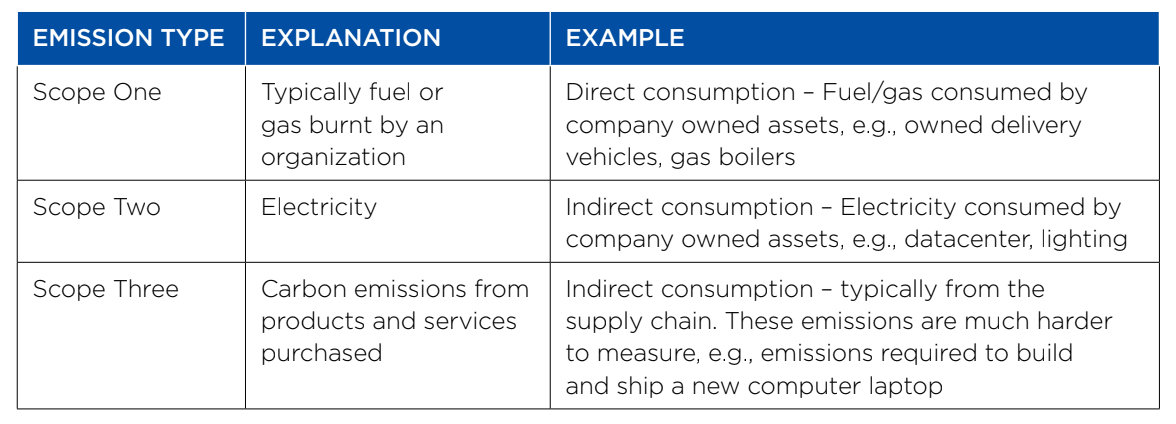Sustainability is quickly becoming an essential mark of business success and an IT best practice. Companies that have adopted an environmental, social and governance (ESG) framework and extended it to employees, partners, customers and suppliers tend to outperform the market, according to Steen Dalgas. The cloud economist at Nutanix told The Forecast that these companies are an attractive target for investors.
A sustainable business operates without negatively impacting the environment. It also prioritizes social responsibility and a people-friendly culture, with governance methods in place to monitor and measure its efforts. ESG best practices are intended to limit risk and promote good business. For IT departments, they translate into buying more efficient products and services, using greener supply chains, and reducing resource consumption. In addition, the governance component of ESG is adding a host of new data sources to corporate analytical systems, for which IT is responsible.
“Companies used to focus on measuring things like profit and cash on hand,” said Dalgas, who helps companies across Europe assess their investment in cloud computing technologies. “But today, they are adding measurements to track sustainability best practices and may have 15 different metrics they’re using to gauge their overall success.”
Environmental, Social and Corporate Governance Hit Bottom Line
The topic of sustainability is percolating across consumers, investors, CEOs, world leaders and IT executives. In a global study conducted for the United Nations, 85% of consumers said sustainability considerations had influenced them to purchase environmentally green products. According to the Harvard Business Review, virtually all of the largest companies in the world now issue a sustainability report and have set public sustainability goals that consumers and investors can review.
Since the pandemic, corporate sustainability seems to have morphed from an act of altruism to a critical success factor. For example, McKinsey & Company has found a significant correlation between a company’s resource efficiency and the strength of its financial performance. It estimates that sustainability lowers resource costs and can improve operating profits by up to 60%. Moreover, a Deloitte study indicates that companies with an inclusive culture enjoy 27% higher profitability and 22% greater productivity.
Dalgas said he began to see clear signs in 2020 that the investment community was favoring companies that ran based on a broader set of ESG frameworks. The PwC’s Global Investor Survey 2022 indicates that the trend is continuing. More than half of respondents indicated that ESG outcomes figured prominently in their investment decisions.
How to Measure Sustainability in IT
Corporations have expanded how they measure energy and other resource consumption. Unprecedented droughts in parts of Europe, the United States, and China, for example, alerted businesses to the astronomical amount of power and water used by data centers for heating and cooling, forcing a closer look at how to achieve energy sustainability.
“Ten years ago, when energy was a lot cheaper, we measured the energy usage required by each server,” said Dalgas. “Now energy has become the biggest single expense item for IT. It’s 40% of the typical data center’s TCO where it used to be 10%.”
The data centers and data transmission networks that underpin the world’s digitalization efforts accounted for almost 1% of energy-related greenhouse gas (GHG) emissions, which is 0.6% of total GHG emissions, according to the International Energy Agency (IEA). The agency pointed out that the rapid growth in workloads handled by large data centers has resulted in rising energy use in this segment over the past several years, increasing by 10-30% per year. It warned that significant additional government and industry efforts on energy efficiency, RD&D, and decarbonizing electricity supply and supply chains are necessary to curb energy demand and reduce emissions rapidly over the coming decade to align with the Net Zero by 2050 Scenario.
Reducing energy consumption first requires awareness of what’s being used, which necessitates accurate measurements, Dalgas said. For example, usage measurements should account for direct and indirect usage of water and power by the business and partners throughout the supply chain, he noted.
Beyond energy usage and emissions, another factor in data center sustainability is what kind of energy is being used. Some countries and states have very green energy, (e.g., geothermal in Scandinavia and hydropower in Washington state). Other areas, such as Poland and many southern U.S. states, have dirtier energy from sources like coal, oil and gas. Dirtier energy sources have a greater environmental impact and should be accounted for accordingly in ESG measurements.
“I've seen stats that say tech industry data centers contribute from 2% to 4% of carbon emissions globally and that this figure could grow to 10% by 2030,” said Dalgas, pointing to a Tech Monitor article titled “The Tech Industry’s Progress on Carbon Emissions has Been Mixed.” The IEA reports that data centers overall accounted for 1% of carbon emissions.
He said organizations are cutting CO2 emissions by using software-defined data centers. Hyperconverged infrastructure, which was pioneered by Nutanix, uses virtualization software and integrated components to reduce the hardware footprint and associated power and cooling required for traditional data centers.
“It can make data centers up to 35% more energy-efficient than traditional three-tier architecture,” he said, citing the 2021 Nutanix ESG report.
Sustainability Requirements As Mandates, Not Guidelines
Measuring energy usage and other environmental impacts in IT and elsewhere is becoming a mandate, not a choice.
“New sustainability requirements will be mandated over the next few years,” said Harmail Chatha, senior director of global cloud operations at Nutanix.
“Our customer proposals increasingly have a section on sustainability. They want to know about our sustainability profile, what data center providers we’re working with and their PUE [power usage effectiveness] scores. They want to know how we are deploying equipment and how we can help them demonstrate environmental sustainability by using hyperconverged infrastructure and multicloud management.”
Startups have emerged to help businesses go from tracking resource usage with spreadsheets to monitoring a broad array of metrics in support of their sustainability efforts. Plan A, for one, provides software that enables businesses to measure, report on and reduce their emissions and improve ESG performance. nZero offers a carbon management platform that operationalizes energy, financial and greenhouse gas emissions data. Carbon Ledger helps compile emissions data from credit card transactions.
There are three energy categories these sustainability management companies report on: emissions from energy sourced directly from the electrical grid for purposes such as powering offices and facilities; indirect power usage in data centers like electrical, steam, heating and cooling; and downstream energy usage, including data on emissions and pollution from a company's ecosystem of partners, suppliers, employees, and company assets.
New sustainability software programs help companies track and measure direct, indirect, and downstream energy sources and usage.
Cloud providers also have jumped on the sustainability measurement bandwagon. The Amazon Sustainability Data Initiative, for example, helps researchers, scientists and innovators advance their sustainability-related research.
How sustainability efforts change the buying habits and makeup of IT organizations over time remains to be seen. But data related to ESG principles has become a new and important knowledge source.
He said ESG data is driving decisions on infrastructure (on-premises vs. cloud), workforces (on-site vs. remote), IT approaches (manual vs. automated) and products (local vs. global sourcing) and is creating the primary criteria for gauging a business’s short- and long-term success.
Editor’s note: Read recent Forecast stories about sustainability efforts in the airline industry and cargo shipping industry.
Gene Knauer is a contributing writer who specializes in IT and business topics. He is also the author of Herding Goldfish: The Professional Content Marketing Writer in an Age of Digital Media and Short Attention Spans.
© 2023 Nutanix, Inc. All rights reserved. For additional legal information, please go here.





